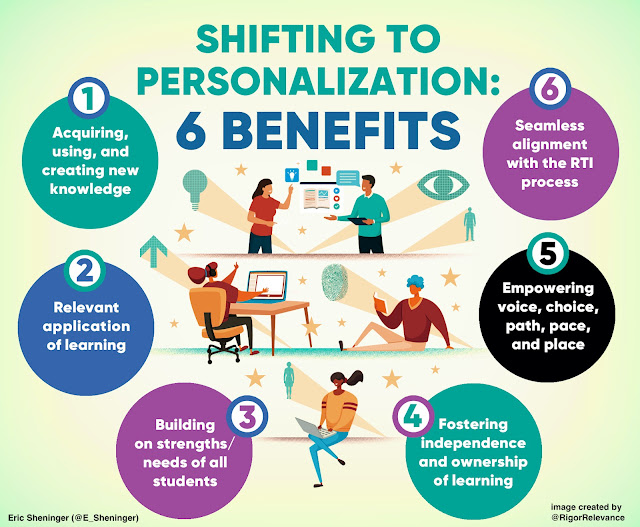There is a great deal of confusion out there as to what personalization is when it comes to learning in and out of the classroom. When terms that are new materialize, there is a natural inclination to develop a meaning that works for a particular narrative or goal. A lack of clarity or pedagogical understanding translates to people and organizations making up whatever fits best. From my lens, this is exactly what has occurred with personalized learning. Below is my strong opinion on the issue, which I shared in Disruptive Thinking in Our Classrooms:
Putting all kids on a device and having them use an adaptive tool at the same time is NOT personalization. Understanding WHO our students are and helping them ALL succeed with or without tech is at the heart of personalized approaches that ensure equity in the classroom.
The last few words above are the most critical. Personalized learning encompasses an array of strategies that provide all learners with what they need, when and where they need it to succeed. This flies in the face of all students doing the same thing, the same way, at the same time during the majority of a lesson, especially the instructional component, or a task. I dive a bit deeper into the concept in this piece of #EDvice.
There is not one right or best way to personalize. However, a significant culture shift is required at all levels, including district, school, and classroom. I shared the following in a past post:
An impersonal approach is all students doing the same thing the same way at the same time. While this can have merit in moderation, excessive use of one-size-fits-all approaches is inequitable. They also tend to focus on the “what .”On the other hand, personalization is where all learners get what they need when and where they need it through equitable experiences. There is also clarity in terms of why they are learning what they are and how it will be used outside of school.
Personalization can occur through many high-agency approaches such as rotational models, choice activities, playlists, flipped lessons, and virtual courses. It can also be achieved through an array of strategies that have been around, in some form or another, for years, including differentiation, response to intervention (RTI), and the purposeful use of technology in alignment with Tier 1 instruction.
If we are serious about equity in learning, then the best path forward is to make concerted efforts to develop a shared vision that emphasizes who we serve and work from there.






